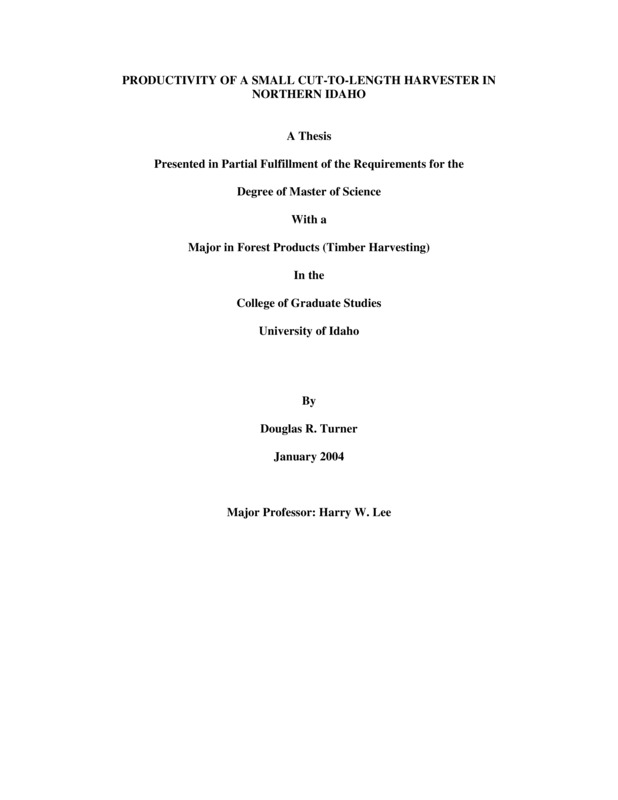PDF PREVIEW
Productivity of a Small Cut-To-Length Harvester in Northern Idaho Item Info
- Title:
- Productivity of a Small Cut-To-Length Harvester in Northern Idaho
- Creator:
- Turner, Douglas R.
- Date Created:
- 2004-01
- Description:
- The use of small cut-to-length harvesters in forest stands composed of small-diameter trees is of increasing interest to natural resource managers. This interest is due to the efficiency and cost-effectiveness of using small harvesters in the harvest of small-diameter trees. This paper presents research regarding the productivity of a Neuson 11002 HV harvester in a clearcut with reserves and a thinning treatment of Douglas-fir tussock moth damaged stand, as well the investigation of the influence of tree branch characteristics upon harvester productivity. Tree heights, diameter at breast height (DBH), species, branch size and branch interval data were collected, to investigate the effect of these characteristics on productivity. An elemental time study was conducted using video footage of harvest operations to determine machine productivity. Production costs are estimated at $5.54/m3 in the clearcut, and $6.22/m3 for the thinning, on a scheduled machine hour and mean tree volume basis. Statistical analysis revealed that brush density, machine travel distance, tree DBH and branch size are influential upon tree harvest time in thinning. Branch size and branch interval are influential upon tree processing time, with branch size of high statistical significance. The Neuson 11002 HV harvester was found to be cost effective in the small diameter stand in which it was employed.
- Document Type:
- Thesis
- Library Call Number:
- SD388.T87 2004
- Subjects:
- Douglas-fir tussock moth cut-to-length harvester clearcut with reserves harvester productivity brush density branch characteristics Neuson 11002 HV Logmax 3000 small harvester forest operations
- UIEF Unit:
- Flat Creek
- Section:
- NE 1/4 SE 1/4 S31
- Township:
- T41N
- Range:
- R3W
- Stand Number:
- 43, 45
- Location:
- UIEF; Flat Creek
- Latitude:
- 46.855191
- Longitude:
- -116.757958
- Department:
- Department of Forest Products
- Type:
- Text
- Format:
- application/pdf
Source
- Preferred Citation:
- "Productivity of a Small Cut-To-Length Harvester in Northern Idaho", UIEF Research Exchange, University of Idaho Library Digital Collections, https://www.lib.uidaho.edu/digital/uief/items/uief_0022.html
Rights
- Rights:
- In copyright, educational use permitted.
- Standardized Rights:
- http://rightsstatements.org/vocab/InC-EDU/1.0/

